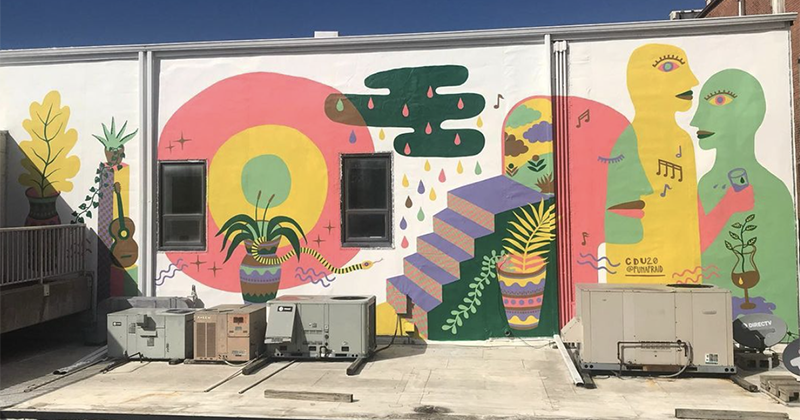Over the last few years, the Smile Politely arts section has continued to highlighted the growing number of mural projects in Champaign-Urbana. Throughout the pandemic, murals brought art outside where it could be easily accessed and safely enjoyed. From Langston Allston’s mural at the North First Street Barbershop, to Carlie Upchurch’s Vibrant Public Mural in Downtown Urbana, we in C-U benefit from a wide range of public art, much of which has been supported, in part, by the Urbana Arts and Culture Program.
And while this section has addressed the value of murals, for both the artist and the community, we have yet to take a deep dive into the hows of mural making. The challenges and opportunities they present (e.g. scale and surface) are unique to their form. Curiosity is a writer’s occupational hazard, so I took my growing list of questions to mural artists Carlie Upchurch and Lisa Kesler. Both Upchurch (of Funafraid and The Rec Club) and Kesler (who you may know from her signature lino cut style) work in other formats and mediums. So I knew they’d bring perspective to the conversation. Where does a muralist begin? What sorts of compositions work best? What are the unique parameters and opportunities that a mural presents?
Herein you’ll find everything you want to know about mural making but were afraid to ask. You’re welcome.
Smile Politely: What drew you to creating murals?
Carlie Upchurch: I’ve always enjoyed painting, especially large format. The first mural I did was a hippo theme in my Aunt’s bathroom at 11 years old.
Lisa Kesler: There’s something very exciting about seeing one’s work on a very large scale. Rather than hanging on a wall indoors, it becomes part of the environment and it has the potential to reach many more people.
SP: In your experience, what are the opportunities and challenges particular to this form and location (considering indoor v. outdoor)?
Upchurch: Each unique project comes with it’s own set of challenges and opportunities. I tend to research a ton if I’m stumped or crowdsource input from someone with more commercial experience or craftsmanship knowledge and experiment til I get it right.
Kesler: For outdoor murals, weather is a big consideration. Not just because of heat or rain, but temperatures can also affect the paint. Certain types of paint won’t cure well when the temperature drops below a certain point. In some cases, a mural can be painted on a support surface in the artist’s studio, then mounted to the wall on site later.
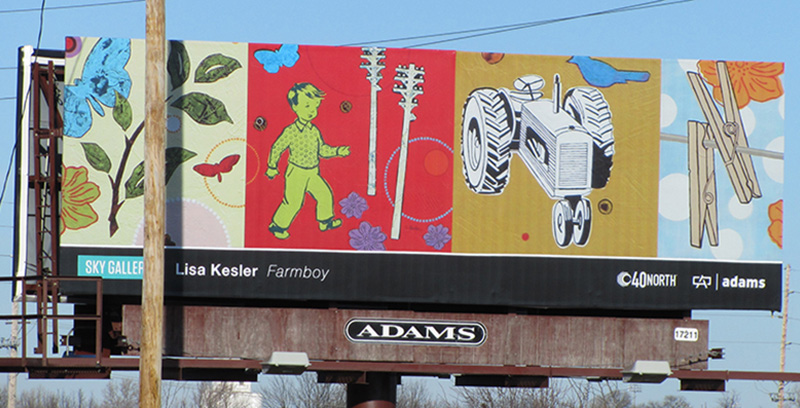
Photo from Lisa Kesler’s website.
SP: Describe your process from inspiration and ideation to completion. What considerations apply to the decisions you make along the way?
Upchurch: My general process is to first get on a call with the client to discuss timing, location, visual direction an d price range. Then I compile and send mood-boards and an estimate sheet. When the client responds with their preferences I send an invoice and contract, get the deposit & begin designing. After any revisions I begin installation. I typically outline the design, then block in colors, then go back to refine lines and add details.
Kesler: I like to take several photos of the site or wall where the mural will be painted or installed. Then I open the image in Photoshop and play around with ideas, layering them over top of the photo. I like to create designs that are eye-catching from a distance and also very interesting to look at up close, with enough details to hold the viewer’s attention. I try to take the color of the ground and sky into consideration so they might become part of the overall environmental design.
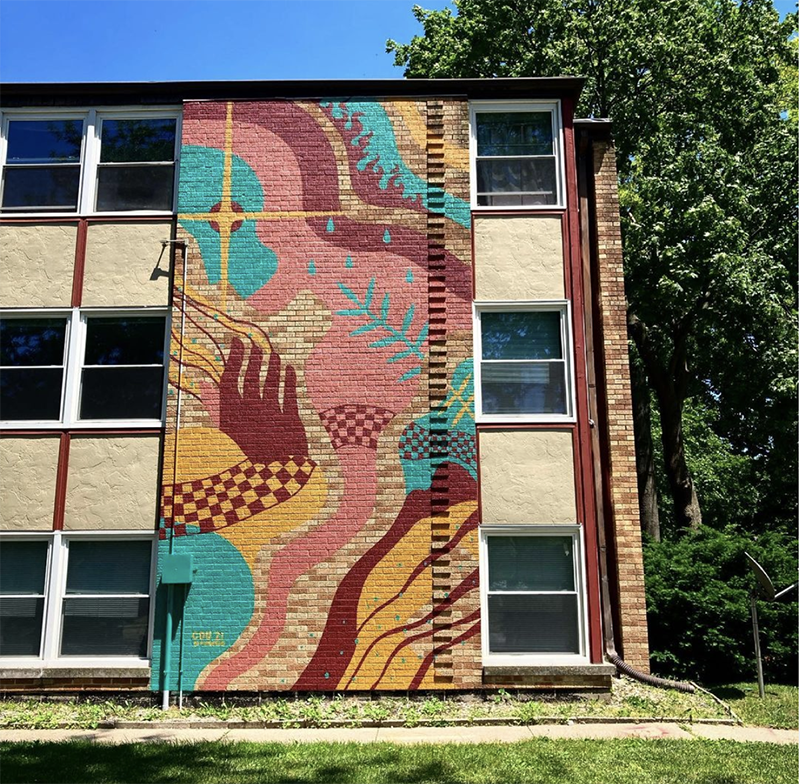
Photo from Carlie Upchurch’s Instagram.
SP: As an artist, what does a mural allow to do that canvas or paper doesn’t?
Upchurch: The most notable bonus to a mural is it’s accessibility (especially if public) and capacity to bring attention to any otherwise overlooked space.
Kesler: A mural allows me to reach many more people with my work than a painting would do.
SP: What do you think is the biggest misconception people have about murals?
Upchurch: Depending on the style of the mural design, I think people might sometimes think that the artist is creating the design as he paints it when, in reality, the design was probably finalized in advance and the artist is only fabricating the design on the wall.
Kesler: I think around here how much a mural should cost is the biggest misconception. Commercial painters charge fair rates for a flat coat, usually $2-$6/sq ft so expect to budget at triple or even quadruple that depending on design complexity and the muralist’s experience.
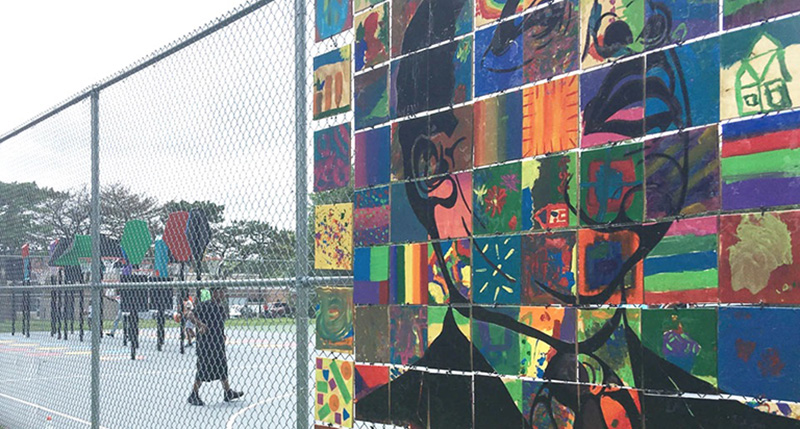
Photo from Lisa Kesler’s website.
SP: Do you work mostly on public art murals or private commissions? Or both? Can you describe how those experiences are different both in terms of process and artistic message?
Upchurch: I’ve done public, corporate and private jobs so far and the overall process remains pretty similar. Sometimes grant projects expect design work up front. Corporate jobs tend to require more negotiating and reading fine print.
Kesler: I haven’t created a mural for a private client yet, although I would love to.
SP: What would you most like people to know about mural making in general, or the murals we enjoy here in C-U?
Upchurch: Murals are one of the first things I notice when I visit a city or larger town. They reveal a lot about the character of the community and the emphasis they place on art. I am happy to see Champaign and Urbana embracing the idea of large scale public artwork.
SP: What other mediums and forms do you work in?
Upchurch: I mostly paint and illustrate but I’ve done multimedia work, logo and poster design and make repurposed jewelry.
Kesler: My paintings are acrylic and mixed media and range in size from six inches to five feet. My original prints are linoleum block and letterpress.
SP: Do you ever receive feedback on the local murals you’ve done? Anything you’d like to share?
Kesler: The indoor mural I designed for Lodgic has been seen and enjoyed by many people over the last few years. People aren’t usually aware that I designed it, but when I tell them, they nearly always tell me what part they like the best.
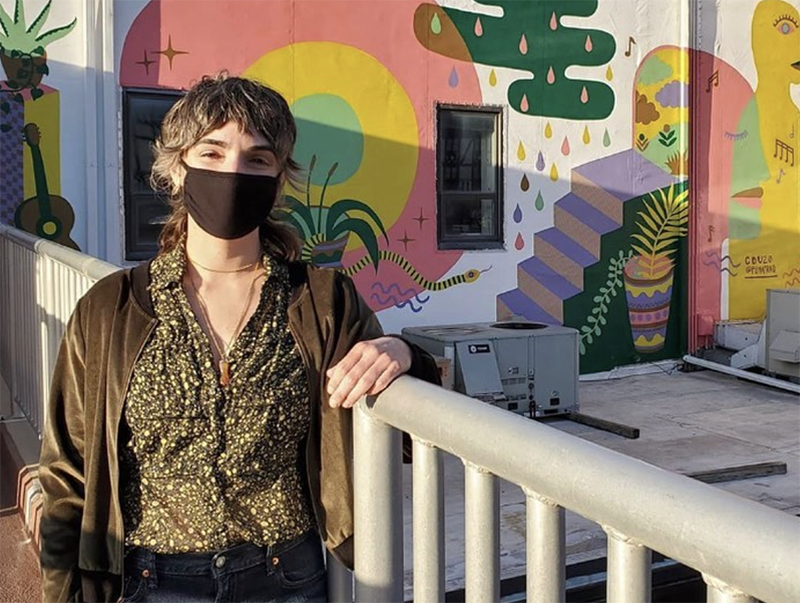
Photo from the Urbana Arts and Culture Program’s Instagram.
SP: What does mural making mean for you?
Upchurch: Mural making means telling a story by bringing attention to the art and into an area otherwise unnoticed.
Kesler: Creating murals makes me a feel a strong connection to my community, a feeling I don’t necessarily get when I create my paintings and prints.
SP: What are you working on these days? What do you have coming up next?
Upchurch: [I’m] currently in the design phase for an upcoming mural on the North side of The Recreation Club in Downtown Champaign.
Kesler: I finished a new series of paintings over the summer. They are mixed media and I experimented with some new techniques, which is something I love to do. I’ll be working on some linoleum block portraits in the coming months, as well as some new abstract paintings on paper.
Follow Carlie Upchurch on Istagram at @funafraid, or contact her at [email protected]
Keep up with Lisa Kesler on her website.








